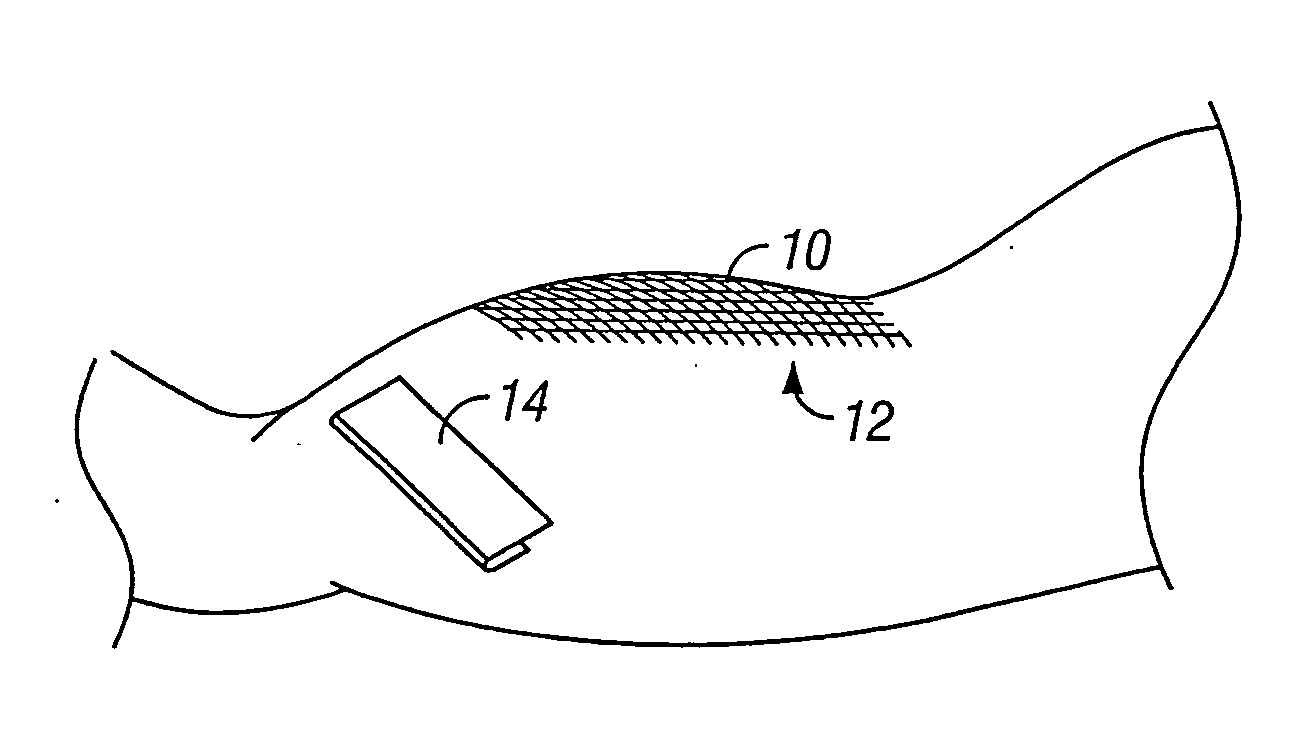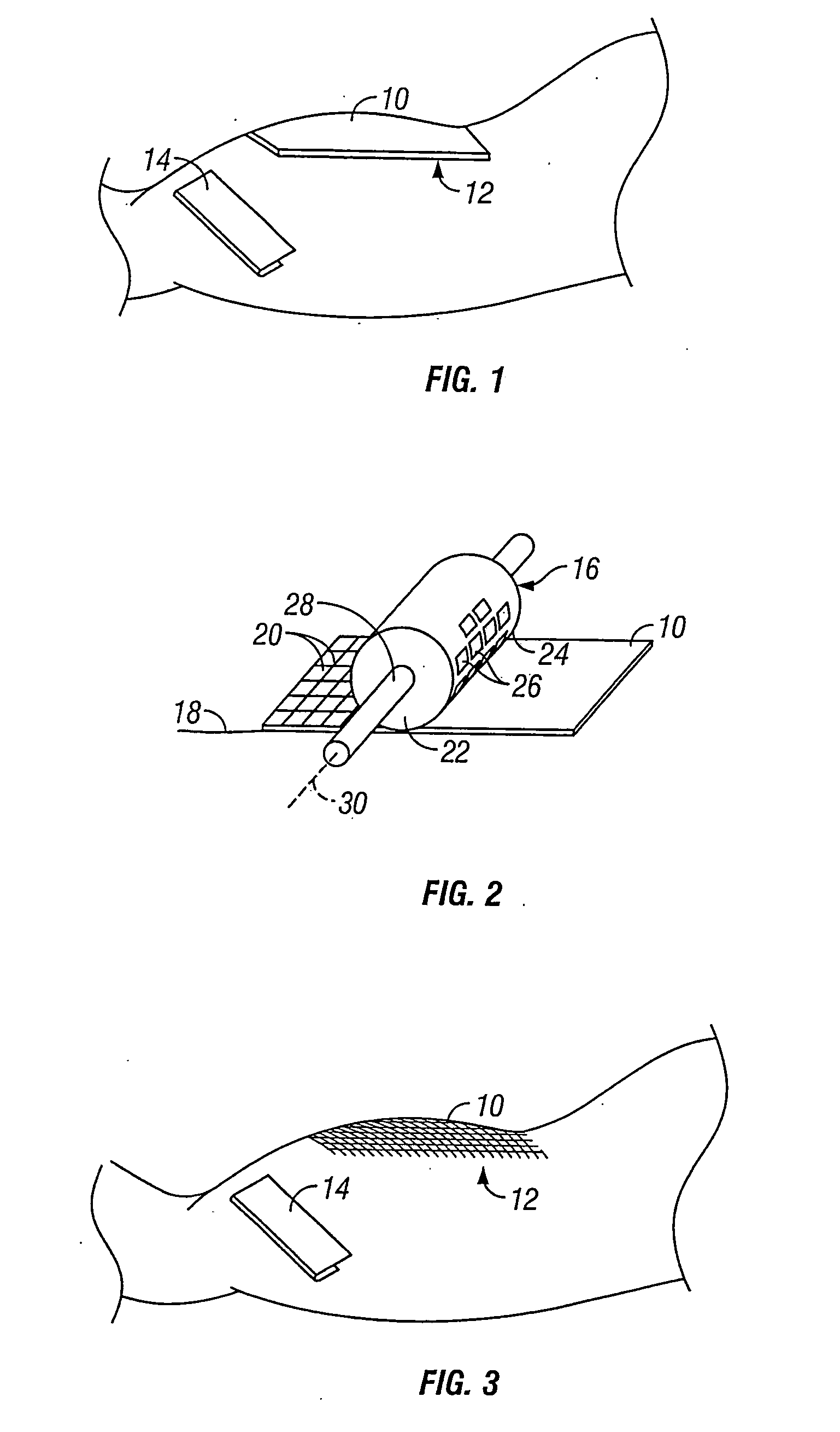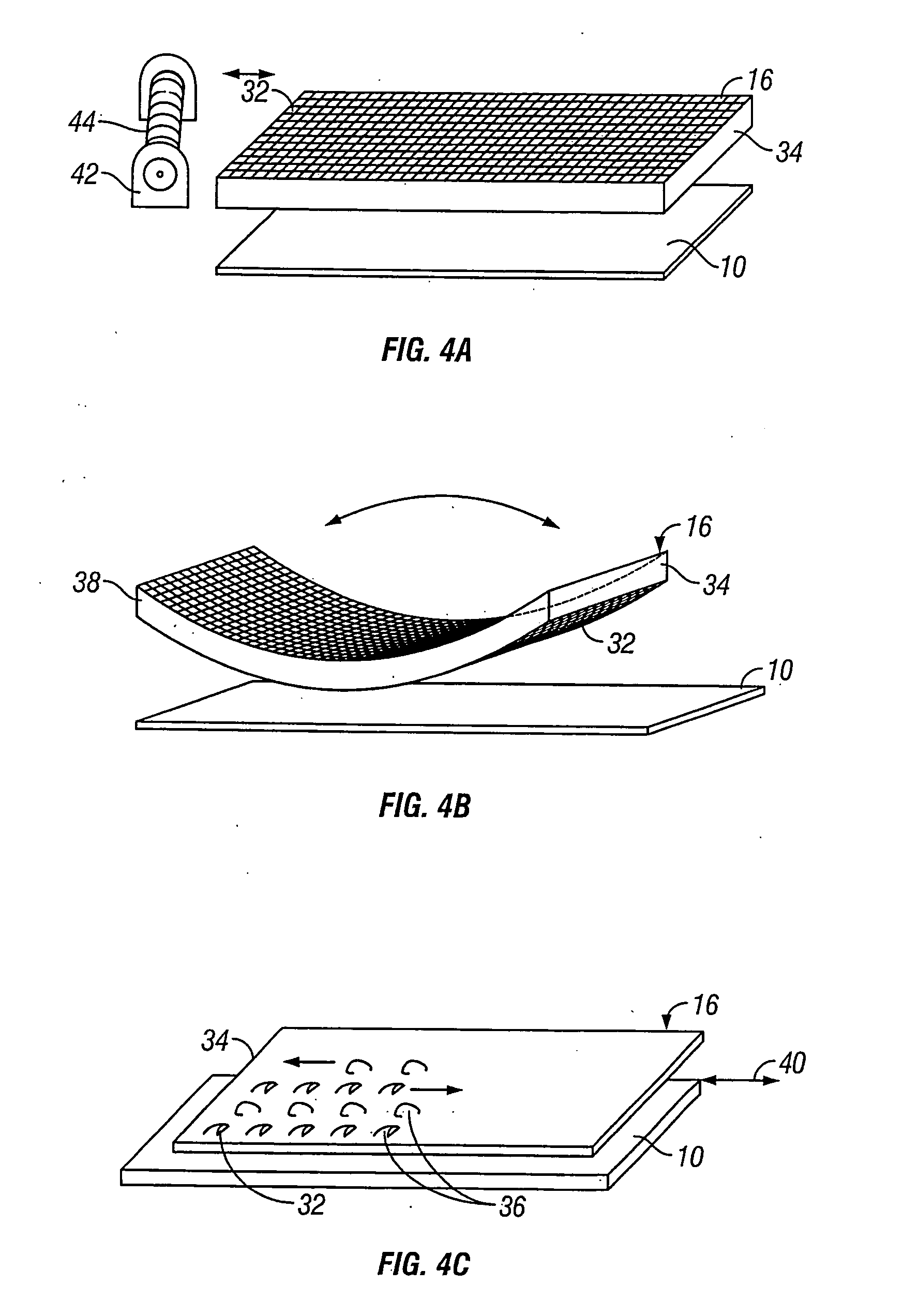Tissue harvesting device and method
a dermal tissue and tissue technology, applied in the direction of grain treatment, shaping cutters, manufacturing tools, etc., can solve the problems of poor circulation, unclean wounds, graft failure,
- Summary
- Abstract
- Description
- Claims
- Application Information
AI Technical Summary
Benefits of technology
Problems solved by technology
Method used
Image
Examples
Embodiment Construction
[0030] Although those of ordinary skill in the art will readily recognize many alternative embodiments, especially in light of the illustrations provided herein, this detailed description is exemplary of the preferred embodiment of the present invention as well as alternate embodiments, the scope of which is limited only by the claims that may be drawn hereto.
[0031] Referring now to the drawings, the details of preferred embodiments of the present invention are graphically and schematically illustrated. Like elements in the drawings are represented by like numbers, and any similar elements are represented by like numbers with a different lower case letter suffix.
[0032] As illustrated in FIG. 1, a donor tissue sample 10, such as a split-thickness-skin graft (“STSG”) may be removed from a healthy region of skin tissue 12 using traditional techniques, such as by running a dermatome 14 across the surface of the donor site 12. The donor tissue 10 is positioned on a flat surface 18, so ...
PUM
| Property | Measurement | Unit |
|---|---|---|
| size | aaaaa | aaaaa |
| size | aaaaa | aaaaa |
| size | aaaaa | aaaaa |
Abstract
Description
Claims
Application Information
 Login to View More
Login to View More - R&D
- Intellectual Property
- Life Sciences
- Materials
- Tech Scout
- Unparalleled Data Quality
- Higher Quality Content
- 60% Fewer Hallucinations
Browse by: Latest US Patents, China's latest patents, Technical Efficacy Thesaurus, Application Domain, Technology Topic, Popular Technical Reports.
© 2025 PatSnap. All rights reserved.Legal|Privacy policy|Modern Slavery Act Transparency Statement|Sitemap|About US| Contact US: help@patsnap.com



